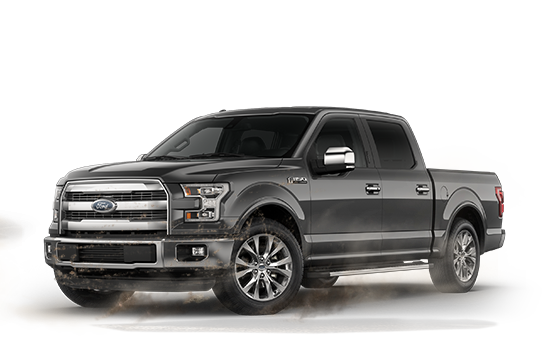Great rivalries drive excellence. Think Red Sox vs. Yankees. Redskins vs. Cowboys. Berkeley vs. Stanford.
In the car industry, the greatest excellence-driving rivalry has got to be the one between aluminum and steel.

It’s been raging for a century, and both sides are convinced that they’ve already won – even while each side keeps surprising the other with new reasons why they haven’t.
We’re certainly in no place to pick a winner, but we’ve been serving dealerships for over three decades, and we can tell you that auto dealer owners and managers have a great deal to learn about finessing a sale by looking at the way OEMs have responded to this metallurgical competition.
Creativity Trumps Physics
Aluminum is lighter than steel. Always has been, always will be, and there’s nothing anyone can do about it. Steel is stronger than aluminum. Same deal.
But neither of those facts matter when you’re trying to develop the strongest, lightest version of a specific part.
As soon as shape, size, temperature, torque, pressure, impact and a host of other considerations come into play, trying to identify the best material becomes vastly more complicated.
The aluminum and steel makers know this, and so they innovate continuously to anticipate and meet the OEMs’ elaborate, specific needs.
At any given time, for example, the steel industry has eighty new versions of steel in development. ArcelorMittal, one of the world’s largest steel producers, thinks that it’s new “Fortiform®” steel will become the dominant material in auto manufacturing over the next five years.
Which would certainly be true except for the fact that Alcoa, one of the world’s largest aluminum producers, is equally convinced that its new “micromill” technology will take over the market instead.
OEMs couldn’t care less. They have a Corporate Average Fuel Economy (CAFÉ) mandate for their average gas mileage to hit 54.5 MPG in 2024, and no one wants to find out what happens if you don’t comply.
They also know they can’t sell anything to mainstream buyers unless Consumer Reports and the NHTSA determine that it’s safe. Oh, and it has to be extremely durable – customers today expect a 100K bumper-to-bumper warrantee.
There’s only one way to accomplish all of this: less weight, more strength.
That’s the public scorecard, and it keeps shifting from one metal to the other. For example, in their recent study, aptly titled Auto Warfare, the Steel Market Development Institute, a major steel industry trade group, warned steelmakers that their arch rivals in the aluminum industry were in “an ebullient mood.”

Why? Why else: Ford decided to switch and build America’s favorite truck, the F-150, out of aluminum.
The steel industry report said that American steel mills were “apprehensive and mystified,” by this because, according to themselves, steel was still the better choice.
Meanwhile the Aluminum Association, like a boxer sensing an opening in his opponent’s defense, has produced an endless stream of content – and yes, a lot of it is “ebullient” – suggesting that the century-old battle between steel and aluminum has clearly shifted to aluminum.
“Pound for pound, aluminum absorbs twice the crash energy of steel,” they gush in one. And in fact, even though the F-150 is now 700lbs lighter than the one made of steel, it is the only full-size truck to get a five star safety rating from the NHTSA.
But the steel industry is quick to point out that it’s not all because of the aluminum. “Engineers added an extra cross member and increased the use of high-strength steel to improve stiffness, durability and safety,” a diplomatic F-150 factory manager told Automotive World.
New Challenges
While the metal industries see themselves locked in a battle, the OEMs see a smorgasbord of options, with new ones coming up all the time. Right now, for example, carbon fiber costs twenty times as much as steel, but the auto industry is already enamored of it.
BMW, Corvette, Tesla and others already incorporate carbon fiber body parts. By using those high in the chassis – door frames, roof panels – designers retain the strength of metal while lowering the car’s center of gravity, increasing performance and fuel efficiency.
And at the bleeding edge we have a glimpse of the future: the Lamborghini Sesto Elemento. This elite sports car uses it in the body, suspension, drive shaft and chassis, slashing weight to a mere 2,202 pounds.

Then there’s graphene, another carbon-based material that is “the strongest material ever measured” at more than a hundred times the strength of steel.
No car parts are made from it yet, but since, as a Columbia University professor explained, “It would take an elephant, balanced on a pencil, to break through a sheet of graphene the thickness of Saran Wrap,” it’s only a matter of time until graphene manufacturers join carbon fiber to challenge both aluminum and steel.
Industry Sees One Thing, OEMs Another
Auto manufacturers track this competition intently, but they don’t take sides. Focused as they are on CAFÉ standards and NHTSA ratings, they tend to look at each individual part and make a cost-benefit analysis for it specifically.
Your customer does the same thing when they evaluate the cars on your auto dealership lot. In the same way engineers at Ford might dream of making an F-150 out of graphene, your customer might look longingly at a car that is, for them at that moment in time, just a dream.
When it comes to making their decision, the numbers matter most. Can they afford the monthly payment? How much will fuel cost? How much will maintenance cost?
To make sure you can sell a car today, you need every tool – every type of material – to choose from. Sometimes a customer is only a couple thousand dollars from buying what would be, to them, the carbon fiber of choices.
Rather than let them walk or trying to get them to “settle” for steel or aluminum, there’s an essential tool you can use to get them into the car they truly want. It’s not financing and it does not require a credit check, but it can help your customer make a larger down payment. Learn more here.



